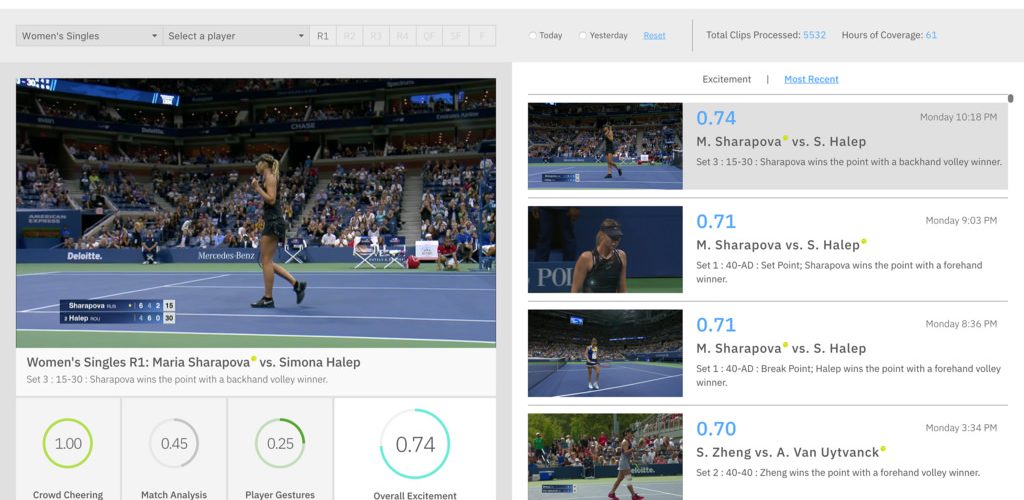Last month IBM launched, “IBM Watson Media, a new portfolio of services to help M&E companies remain competitive by calling on Watson’s power to reason, understand and learn what’s inside a video.”
The major move by the widely known artificial intelligence platform is a major step forward in the evolution of online/mobile video. Even though the platform just launched it’s already being used, most recently by the US Open. Found Remote interviewed David Mowrey, Head of Product and Development for Waston Media at IBM about the new product.
Found Remote: Why did IBM Watson develop M&E expertise?
David Mowrey: IBM has extensive experience working in the media and entertainment industry and over the past couple of years, we’ve seen the market boom. As the landscape becomes more crowded, companies are under intense pressure to offer consumers a personalized and engaging viewing experience. From providing solutions for leading media and entertainment companies over the past couple of years, we recognized that they had a notoriously hard time analyzing their video content. To solve this key industry challenge, we combined IBM’s media and entertainment expertise with our cutting-edge AI technology. Through IBM Watson Media, we’re bringing the cognitive power of Watson to video to help companies make more intelligent decisions about the content they create, acquire, and distribute.
In particular, IBM Watson Media allows media and entertainment companies to gain a deeper understanding of their video library by pulling rich metadata from the content–––anything from visual data (people or objects), textual and audio cues (captions and sounds), emotional cues (tone), to specifics like location. Armed with this knowledge, media and entertainment companies can more easily create engaging experiences for consumers,and better matches for advertisers.
FR: How will IBM Watson help M&E companies as the industry evolves?
DM: IBM Watson Media solves major industry challenges. Leveraging IBM’s cognitive technology, our services streamline all aspects of streaming video––from advertising, compliance, content creation and acquisition, video editing and search and discovery––and also allows media and entertainment companies to better understand what’s inside their video. As a result, media and entertainment companies will now be able to more easily produce and acquire content that is sure to be a hit, offer consumers a more personalized viewing experience, help production teams find specific video clips in real-time, and have better ROI for each ad placement.
FR: Some examples of how they’re already working in media and entertainment?
DM: At this year’s US Open, video editors used IBM Watson Media services to put together Cognitive Highlights in order to keep up with tennis fans’ on-demand expectations. Specifically, our powerful technology helped video editors identify exciting moments from every court and serve up highlights almost instantly to fans through social media. Going forward, we will continue to work with leading media and entertainment companies to help increase the value of their video content and stay one step ahead of competitors.
FR: Anything else?
DM: IBM Watson Media is reshaping how the media and entertainment industry engage with both consumers and advertisers alike. It is the most advanced portfolio of commercially available, cognitive services for media content and features include:
- Highlight Clipping: Near real-time analysis of video footage to identify and segment the most exciting parts.
- Content Search & Discovery: Refined and detailed searches of content down to the scene level based on rich metadata identifying items and context.
- Recommendation Uplift: Suggestions of new content for viewers based on a deeper understanding of previously viewed and liked content.
- Intelligent Closed Captioning: Speech-to-text that can transcribe audio and improve by learning topic-specific terminology.
- Compliance: Identification of content, such as a violence or objectionable language, that must be screened and labeled to meet industry regulations.





















